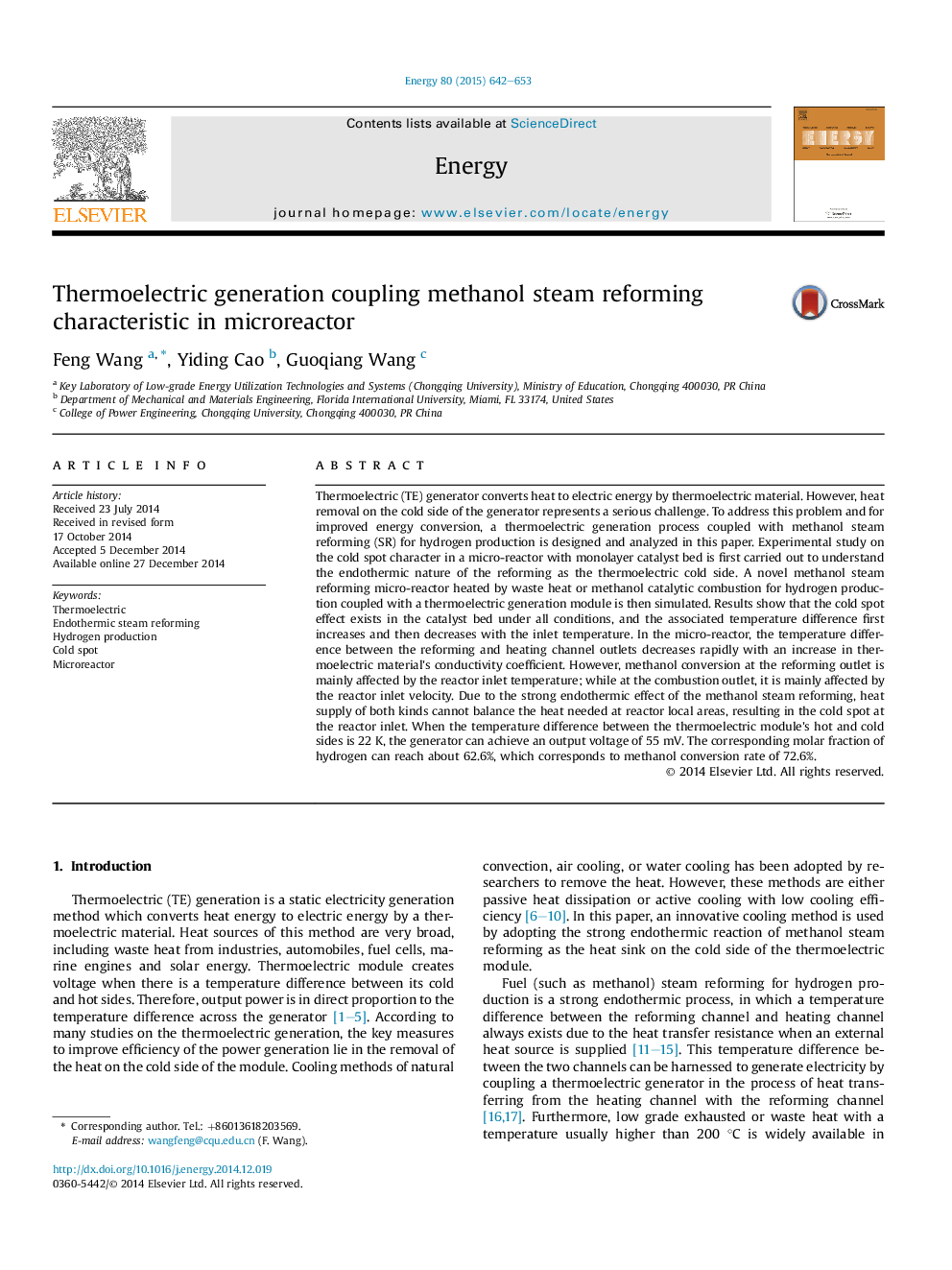| کد مقاله | کد نشریه | سال انتشار | مقاله انگلیسی | نسخه تمام متن |
|---|---|---|---|---|
| 1732039 | 1521466 | 2015 | 12 صفحه PDF | دانلود رایگان |
عنوان انگلیسی مقاله ISI
Thermoelectric generation coupling methanol steam reforming characteristic in microreactor
ترجمه فارسی عنوان
ترکیب ترموالکتریک متانول بخار رونویسی مشخصه در میکروسکوپ
دانلود مقاله + سفارش ترجمه
دانلود مقاله ISI انگلیسی
رایگان برای ایرانیان
کلمات کلیدی
موضوعات مرتبط
مهندسی و علوم پایه
مهندسی انرژی
انرژی (عمومی)
چکیده انگلیسی
Thermoelectric (TE) generator converts heat to electric energy by thermoelectric material. However, heat removal on the cold side of the generator represents a serious challenge. To address this problem and for improved energy conversion, a thermoelectric generation process coupled with methanol steam reforming (SR) for hydrogen production is designed and analyzed in this paper. Experimental study on the cold spot character in a micro-reactor with monolayer catalyst bed is first carried out to understand the endothermic nature of the reforming as the thermoelectric cold side. A novel methanol steam reforming micro-reactor heated by waste heat or methanol catalytic combustion for hydrogen production coupled with a thermoelectric generation module is then simulated. Results show that the cold spot effect exists in the catalyst bed under all conditions, and the associated temperature difference first increases and then decreases with the inlet temperature. In the micro-reactor, the temperature difference between the reforming and heating channel outlets decreases rapidly with an increase in thermoelectric material's conductivity coefficient. However, methanol conversion at the reforming outlet is mainly affected by the reactor inlet temperature; while at the combustion outlet, it is mainly affected by the reactor inlet velocity. Due to the strong endothermic effect of the methanol steam reforming, heat supply of both kinds cannot balance the heat needed at reactor local areas, resulting in the cold spot at the reactor inlet. When the temperature difference between the thermoelectric module's hot and cold sides is 22Â K, the generator can achieve an output voltage of 55Â mV. The corresponding molar fraction of hydrogen can reach about 62.6%, which corresponds to methanol conversion rate of 72.6%.
ناشر
Database: Elsevier - ScienceDirect (ساینس دایرکت)
Journal: Energy - Volume 80, 1 February 2015, Pages 642-653
Journal: Energy - Volume 80, 1 February 2015, Pages 642-653
نویسندگان
Feng Wang, Yiding Cao, Guoqiang Wang,
